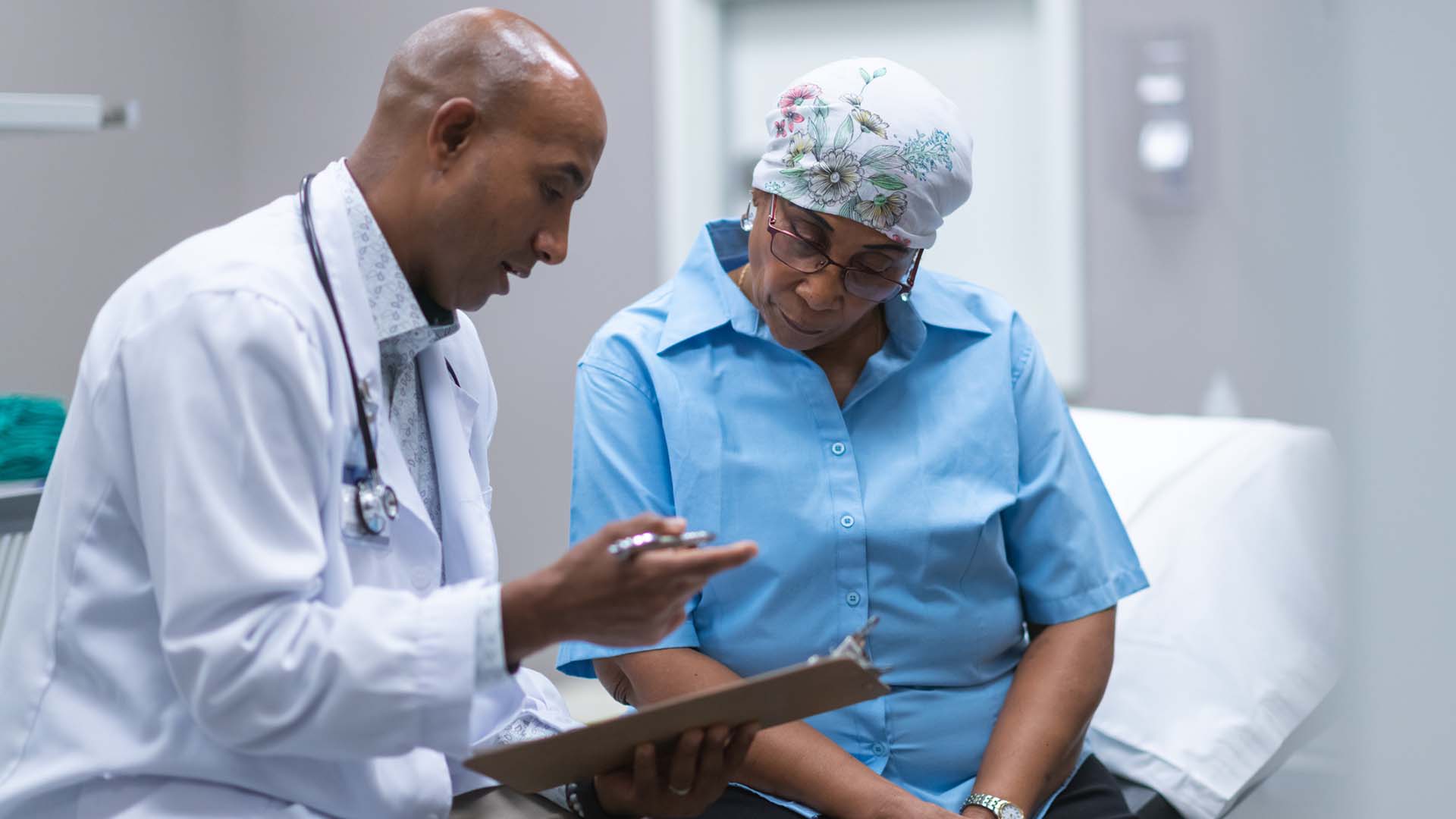Updated on October 25, 2024
Are there racial disparities in the diagnosis of metastatic breast cancer? In this video, surgical oncologist Ryland J. Gore, MD discusses the research around breast cancer risk and diagnosis among Black and Hispanic women in the U.S.

Transcript
Hi, Dr. Gore. Are racial disparities prevalent in the diagnosis of metastatic breast cancer?
[MUSIC PLAYING] Unfortunately, yes. There have been several studies on this subject
and it was found that some populations have increased risks and rates of metastatic breast cancer than others.
For example, research has shown that Black women have higher rates of metastatic breast cancer than white women in the United States.
Also, Hispanic women are more likely to be diagnosed at a younger age and with a more advanced phase,
such as triple negative breast cancer, which has fewer targeted treatments. Now, the good news is that overall, breast cancer-related
deaths in the United States have decreased by 40% over the last 30 years. This is thanks to things like increased awareness
of the condition, more women getting mammograms, and better research. But while overall breast cancer-related death rates
are down, Black women living with breast cancer have a 42% higher mortality rate than white women.
Why do you think that's the case? There are a few factors that might account for these disparities. Black people might face socioeconomic challenges,
like poverty or being under-insured, which also contribute to this gap. Sometimes people aren't able to see a doctor regularly.
So by the time a patient gets checked out, the cancer might have spread or metastasized. Another reason could be a lack of access
to the right professionals. Because of location or lack of transportation, a patient might not be able to get
to the right medical specialist. There may also be communication barriers between a doctor and their patients. Some patients might not be fluent
in the same language the doctor speaks or the patient might not know and understand some medical words. This is one of the many reasons why
diversity matters when it comes to health care professionals. How does this impact people of color getting proper treatment?
RYLAND J. GORE: While we are getting better at treating metastatic breast cancer every day, we don't yet have a cure.
The best way to improve the treatments and disease management options we do have is through research and clinical trials.




